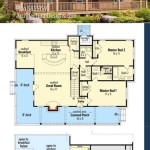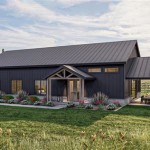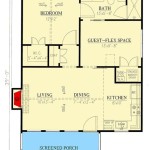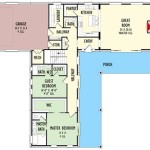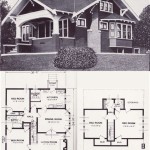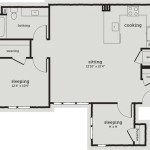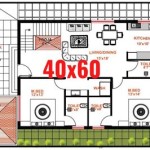House Plans for Disabled People
When designing a home for someone with disabilities, it's important to consider their specific needs and how the space can be adapted to meet them. This may include making changes to the floor plan, widening doorways, or installing ramps and grab bars. By taking these factors into account, you can create a home that is both comfortable and accessible for your loved one.
Floor Plan
The floor plan of a home for disabled people should be designed to minimize barriers and promote accessibility. This means avoiding sharp corners, narrow hallways, and steep stairs. Instead, opt for open floor plans with wide hallways and ramps or elevators to connect different levels of the home. It's also important to place frequently used rooms, such as the kitchen and bathroom, on the main floor to minimize the need for stairs.
Doorways
Doorways should be widened to allow for wheelchairs and other mobility devices. Standard doorways are typically 32 inches wide, but a wheelchair-accessible doorway should be at least 36 inches wide. Additionally, consider installing automatic door openers to make it easier for people with disabilities to enter and exit the home.
Ramps and Grab Bars
Ramps can be used to provide access to different levels of the home, such as the porch or garage. They should be designed with a slope that is gradual enough to be easily navigated by wheelchairs and other mobility devices. Grab bars can be installed in bathrooms, showers, and other areas of the home to provide additional support and stability.
Bathrooms
Bathrooms should be designed with accessible features, such as roll-in showers, raised toilets, and grab bars. Roll-in showers are showers that are large enough for a wheelchair to roll into and have a built-in seat. Raised toilets are toilets that are higher than standard toilets, making them easier for people with disabilities to sit on and stand up from. Grab bars can be installed around the toilet, shower, and sink to provide additional support.
Kitchens
Kitchens should be designed with accessible features, such as lower counters, pull-out shelves, and accessible appliances. Lower counters make it easier for people with disabilities to reach and prepare food. Pull-out shelves provide easy access to items that are stored in cabinets. Accessible appliances are appliances that are designed for people with disabilities, such as refrigerators with pull-out shelves and ovens with raised controls.
Other Considerations
In addition to the specific features mentioned above, there are other considerations that should be taken into account when designing a home for disabled people. These include:
- Lighting: Good lighting is essential for people with disabilities, as it can help them to see and navigate their surroundings. Consider installing bright, natural lighting throughout the home, and supplementing with artificial lighting as needed.
- Furniture: Furniture should be comfortable and supportive for people with disabilities. Choose furniture that is easy to get in and out of, and that provides good back support.
- Decorations: Decorations can add personality and style to a home, but they should not be placed in a way that creates barriers or hazards for people with disabilities. Avoid using items that are sharp, fragile, or that could easily be knocked over.
By following these tips, you can create a home that is both comfortable and accessible for people with disabilities. This will allow them to live independently and with dignity, and to enjoy the same quality of life as everyone else.

Wheelchair Accessible Tiny House Plans Enable Your Dream

Wheelchair Accessible Floor Plan

Wheelchair Accessible Small House Plans Drummond

House Plans With Accessible Handicap

Wheelchair Accessible House Plan 2 Bedrms Baths 1687 Sq Ft 147 1009

Attractive Traditional House Plan With Handicapped Accessible Features

Wheelchair Accessible Small House Plans Drummond

How To Make Your Home Wheelchair Accessible

Wheelchair Accessible Small House Plans Drummond

Timber Frame House Kit For Disabled Accommodation

